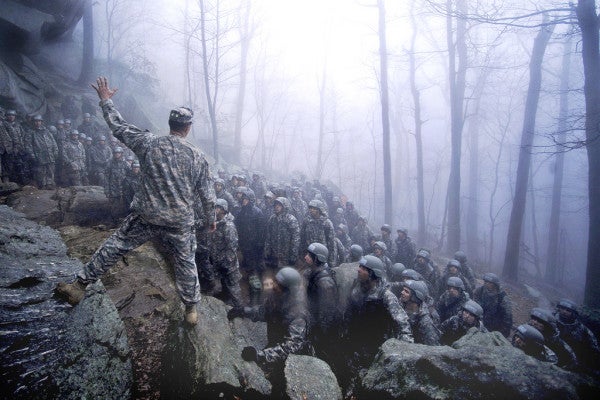Why Military Instructors Are Exceptional Candidates For Careers in Learning Science
The Army places a lot of emphasis on having a highly trained, highly experienced cadre of instructors for their schools....

The Army places a lot of emphasis on having a highly trained, highly experienced cadre of instructors for their schools. To begin with, there is a rank requirement: If you are not yet a staff sergeant, you will not be standing in front of any kind of formal military classroom. Next, complete 160 hours of training and evaluated teaching, and you just might earn your basic Army instructor badge. Next challenge is the senior Army instructor badge. Tack on 400 more hours soloing and more evaluations to get that. The next and final qualification is the master Army instructor badge, which requires 400 hours as primary instructor, followed by a more rigorous oral board administered by other instructors. And true to military tradition, this oral board will not be a stroll through the park. Since most instructors receiving this badge have well over 20 years of service in by the time they retire, you now have the following as your baseline skill set: 20+ years of military experience, and at least 1,000 hours of evaluated classroom teaching and formal training, all wrapped up in the soldier’s current career field. So what can you do with this skill set?
Take a look at McGraw-Hill Education, which has office locations in several major U.S. cities and around the world. They have made the transformation from a traditional textbook publisher to a developer of cutting-edge digital content and platforms. The company’s vision is to unlock the full potential of each learner and its mission is to accelerate learning through intuitive, engaging, efficient and effective experiences – grounded in research.
This is rapidly changing not only how schools teach, but corporations as well. So how do the Army’s (and other branches) highly proficient, credentialed military instructors engage with this high-tech world? Given their extensive training and experience, the answer is simple: Good teaching. Military instructors receive nearly the same level of formal certification as do most state-certified teachers in public schools. In fact, the 900 hours spent “soloing” in front of a classroom of students is more than any teacher is expected to perform in any of their field-work classes. And the subject matter that military instructors teach is truly an area they have mastered. Tank mechanics don’t teach avionics; instructors will have at least six to eight years of experience working in their subject matter area, if not more, making them true experts.
McGraw-Hill Education recognizes this military skill set and looks for it in candidates for their editorial, project management, and instructional designerjob openings. For example, an editorial coordinator will work with multiple contributors around the country or globe, collaborating with these external stakeholders to ensure they meet the project schedule and deadlines; adjusting these dates as necessary based on budget, production deadlines, and needs of the business. Finally, they will work with internal teams leading different technologies to the finished product. Mission accomplished.
Product and project managers work with both external stakeholders (clients/customers) and internal stakeholders to coordinate inputs, market trends, available technologies, and future trends, delivering a final product that is on time, on budget, and of the highest quality.
These two roles might not be too difficult for an experienced military instructor to identify with. But how about a job posting for instructional designer? Instructional systems design is the process of designing and developing instructional courses or materials that bring greater efficiency and effectiveness to acquiring knowledge or skills for learners. This might come as a surprise to those not in the military, but our servicemen and women are continuous improvement ninjas. There is always, always, always a focus on improving every process, practice, piece of equipment, and the individual (physically and mentally). This six sigma-esque quality is so deeply ingrained that it can best be described as a hard skill set for those that have worn the uniform.
A military instructor does not have to wear a master instructor badge to be tasked with a class design and development project. These projects are assigned at all ranks, at any time, and cover large- and small-scale educational and development goals. Often, these assignments will go past the normal visual aids needed for a classroom environment and into a more physical aspect, where mockups need to be constructed, static displays bolted together, and scenarios rehearsed. So while the traditional model of analysis, design, development, implementation, and evaluation — ADDIE — for instructional system design might not be strictly followed, we do see the same results from very similar efforts.
It is important for hiring managers, human resources professionals, and corporate recruiters to do the best they can to realize the applicability of military skills to the core competencies of open positions in fields like learning science and others. However, it is just as important for transitioning military professionals to understand some of the crossover points their military skills bring to corporate America. It’s matter of translation to be completed by both parties. But the languages are not entirely foreign to one another; rather they’re merely a slightly different dialect. Instructors in the military are well suited and ready made to perform exceptionally well in roles from classroom teachers to course architects, and everything in between.
Visit Hirepurpose, for more information about McGraw-Hill Education.
Visit McGraw-Hill Education’s Careers page to learn more about job opportunities in learning science.